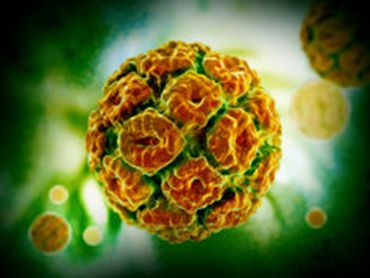Why Mark Zuckerberg was right to vaccinate his daughter
![]()
Anita Milicic, Senior scientist, University of Oxford
 Human papilloma virus (HPV)
Human papilloma virus (HPV)(Credit: Shutterstock)
So was Zuckerberg right to have his child vaccinated? You take your perfectly healthy, happy baby to the doctor, she stabs her in the leg with a needle and you’re left holding a child that screams the place down for two minutes.
Well, it’s either that or risk catching meningitis, pneumonia, polio, diphtheria, measles, tetanus, or rubella.
In 1980, measles alone caused around 2.6m deaths. Global immunisation has brought this down, but still 115,000 people died from measles in 2014, mostly small children. Why, when we have a safe and effective vaccine against measles?
There are many logistical obstacles to successful vaccination globally, especially in poor countries, but that’s a different discussion. Let’s instead focus on busting some vaccination myths that have contributed to the recent rise of several infectious diseases in developed countries.
Myth 1: MMR vaccine causes autism
Rarely has a piece of misinformation single-handedly caused so much damage. In 1998, a Lancet paper by Andrew Wakefield proposed a causal link between the MMR (measles, mumps, rubella) vaccine and autism. Autism is usually diagnosed in preschool children (four-year-olds in the UK), and the second dose of MMR is given between ages three and four. The two can coincide, but there is no causality.
A formal inquiry found the research fraudulent and unethical – the children with autism were subjected to unnecessary invasive procedures such as colonoscopies and lumbar punctures. It was discredited and the paper retracted. But the damage was done. The MMR vaccine uptake in the UK fell from 94% to under 70%. In 2013, measles returned, resulting in serious illness, hospitalisation and even deaths in the UK and US.
Myth 2: The HPV vaccine isn’t safe
This claim is based on selective reporting of unexpected symptoms following a vaccination. Since 1990 health providers are required to report all adverse events that occur after vaccination, the VAERS (Vaccine Adverse Event Reporting System). To date, over 30,000 adverse events and 200 deaths have been recorded for the new HPV vaccine Gardasil (from nearly 200m administered doses). When a vaccine starts collecting bad reports, the number of reported “adverse events” goes up sharply. This does not mean the vaccine is the cause of these events, or deaths. What it means is that a death occurred after the person was vaccinated. People of all ages die worldwide every day. Some will have even received a vaccine prior to their death.
The only way to ensure that the reported adverse events are linked to a vaccine is to compare the number of the same events in a similar but unvaccinated sample of the population.
In November 2015, the European Medicines Agency completed a thorough review of HPV vaccine safety and found no concerns.
Myth 3: Vaccines contain toxic chemicals
Aluminium salts are commonly added to improve the immune response to the vaccine. Aluminium occurs naturally in breast milk, formula milk, some foods and drinking water. The total amount of infant exposure through food and vaccination is well within the recommended safe levels.
Thiomersal is a vaccine preservative containing a form of mercury that is easily excreted from the body (unlike methyl mercury found in tuna fish). The concerns about its toxicity are only theoretical and have not been scientifically proven. Thiomersal is not found in the childhood vaccines routinely used in the UK.
Formaldehyde is used in vaccine production to inactivate toxins from bacteria and viruses. A pear contains around 50 times more formaldehyde than is found in any vaccine.
Unlike most drugs, the vaccine patient information leaflets list every ingredient used in the vaccine production, including trace substances, so that anyone with a severe allergy to any of these substances is consulted prior to vaccination.
Myth 4: Vaccines can give you the disease they’re meant to be protecting you from
It is impossible to get a disease from a vaccine made with killed bacteria or viruses, or made with only part of the bacteria or virus. In rare cases, vaccines that contain a live weakened virus can cause a mild form of the disease they protect against. The live oral polio vaccine did cause polio in a handful of cases and has not been used in the UK since 2004. The MMR vaccine very occasionally causes a mild form of measles or mumps that can last for a day or two. This kind of vaccine is only a risk to children with weak immune systems, such as those with cancer, who instead have to rely on protection through herd immunity.
Myth 5: Vaccines only profit Big Pharma
Yes, vaccines are profitable, but far less profitable than most drugs, amounting to only 1-2% of global pharmaceutical sales. It takes decades and hundreds of millions of dollars in investment to develop and licence one vaccine. Without recouping these costs there would be no investment to develop new vaccines. Some vaccines are too costly for global coverage – although the manufacturers sell them at a reduced price to the developing countries and organised vaccination initiatives. And, as we are currently in the Decade of Vaccines, greater vaccine accessibility and improved pricing transparency are high on the agenda of the WHO and GAVI (a Global Vaccine Alliance), and major funders such as the Gates Foundation.
We are fortunate to live in a time where we have access to vaccines against many terrible diseases. We should take advantage of this. As most parents will know, babies and young children are particularly prone to infections. Don’t compromise your child’s health by denying them vaccination. If they do catch something, it might just be too late.
This article was originally published on The Conversation. Read the original article.